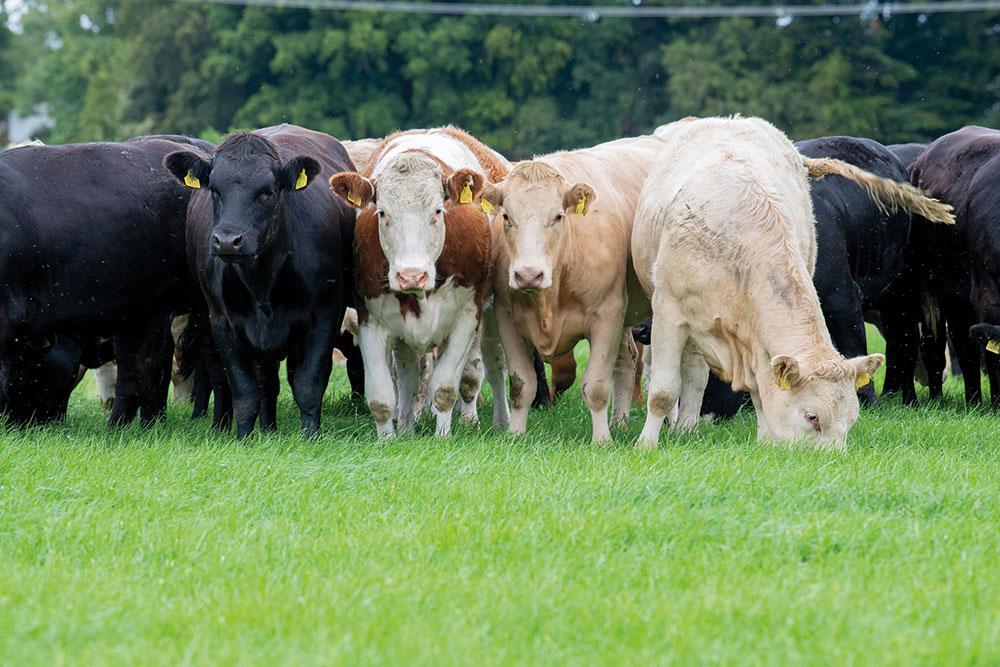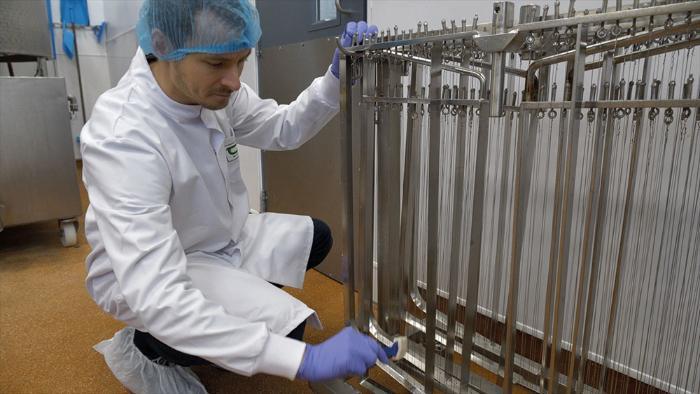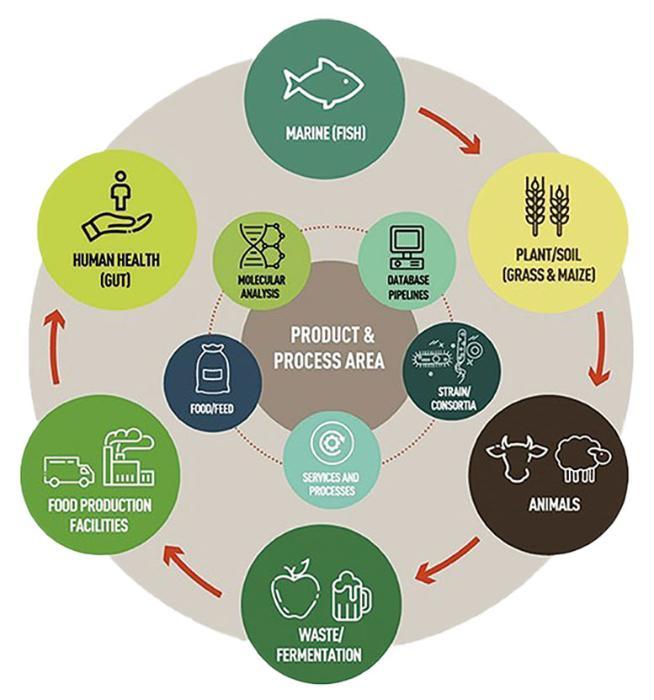21 August 2024
MASTERing food chain microbiomes
The Teagasc-led, EU-funded project MASTER focused on harnessing food chain microbiomes to benefit the global agri-food industry by improving the quantity, quality, safety and sustainability of foods.

Rumen gut microbes play a pivotal role in enteric methane production. Photo credit: Andrew Downes
The microbiomes that exist all around and inside us hugely impact our health and wellbeing, and that of the animals, crops and environments that contribute to our food supply. The project Microbiome Applications for Sustainable food systems through Technologies and EnteRprise, or MASTER, used DNA sequencing and other technologies to identify and improve microbiome-related applications throughout the food chain.
The 29-partner MASTER team was based across 14 countries, and included research organisations, large industries and SMEs in the soil, crop, marine, animal, food and human health spaces. The €10.9 million project was coordinated by Teagasc Senior Principal Research Officer, Paul Cotter, assisted by Senior Research Officers Fiona Brennan and Sinéad Waters, Project Manager Mairéad Coakley and research teams across Teagasc programme areas Food, CELUP and AGRIP.
Fertile ground
Soil microbes play a vital role in food production by supporting crop health and maintaining our planet’s ecosystems. With the transition to carbon-neutral farming, a major challenge is maintaining productivity while reducing fertiliser inputs that can have negative environmental impacts. Microbial bioinoculants, microbes that enhance plant health and growth, have been proposed as an alternative to chemical fertilisers. However, their effectiveness in grasslands was not previously well-understood, explains Fiona.
“In MASTER, we tested the efficacy of various bioinoculants in both pot and field trials on ryegrass, ryegrass with clover, and mixed-species grassland swards. We found that soil fertility significantly affected the ability of mycorrhizal bioinoculants, fungi that form mutually beneficial associations with plants, to colonise plant roots.”
Although bioinoculants could persist in the soil for over a year, they generally had no significant impact on yield and nutrient uptake, bar a few exceptions, Fiona continues.
“Our research showed that, under field conditions, diversifying grasslands by including legumes and herbs – and thereby harnessing the indigenous microbial community – was a far more effective strategy for enhancing forage yield and nutrient uptake than using microbial inoculants. This approach proved to be a better farm-scale management strategy for sustainable agriculture, supporting both productivity and environmental health.”
Gut feeling
Rumen microbes, which reside in the gastrointestinal tract of ruminant animals such as cattle and sheep, play a pivotal role in animal production through the digestion of feed and in the production of enteric methane, a by-product of ruminants’ natural digestive process. Research during MASTER involved establishing the rumen microbial composition of a large number of animals, including 1,600 cattle (mainly beef from a range of breeds) and over 150 sheep (breeds of Cheviot, Connemara, Lanark & Perth).
Research then focused on their role in improving animal production and reducing environmental impact, through the manipulation of these rumen microbiomes. MASTER identified residual methane emissions as a good trait to exploit inter-animal variation in enteric emissions, and to investigate underlying biological regulatory mechanisms related to the rumen microbiome.
Sinéad explains, “Throughout MASTER, methane, rumen microbiome and performance data was collected on a continual basis, leading to the accumulation of data from 1,600 beef cattle. Our data contributed to the development of the world’s first genetic methane evaluation for the selection of beef cattle with lower methane emissions.
“Enteric methane emissions is a trait which is moderately heritable and, as such, selective breeding strategies offer promising solutions for producing animals that are less methane-intensive and more environmentally friendly. These solutions are long-lasting and cumulative.”

MASTER researchers created a unified approach to the analysis of food chain microbiomes. Photo credit: AV Star Systems
Food for thought
During MASTER, a sampling campaign was completed at 114 food industries across Europe, with 15 of these undertaken in Ireland by Teagasc. MASTER researchers created a unified approach to the analysis of food chain microbiomes via DNA sequencing; these standardised methods are available on the project website. This approach allows the rapid and accurate analysis of all microbes present in food chain samples, including unknown or overlooked etiological and spoilage agents.
Demonstration activities were since completed for over 200 European food companies who may wish to employ this technology in the future. Its use is facilitated by the fact that one of the MASTER partners is developing, for commercial release, an associated DNA extraction kit designed for food processing industry use.
The microbiome-related data generated through this sampling campaign was deposited in a curated database and it, and the computational pipelines that can be used to analyse this data, are now freely available to be exploited by the scientific community, food producers, food processors, regulators and consumers.
MASTER researchers used DNA sequencing technologies to investigate the microbiomes of food systems and mined microbiome data relating to food chains; developed big data management tools to identify relationships between microbiomes across food chains; and generated applications which will promote sustainability and circularity. A variety of technologies, microbial strains, foods, food ingredients, feeds, procedures and computational approaches were developed in parallel, Mairéad notes.

Photo credit: Teagasc
“Over 80 research outputs have been published to date from the MASTER team, with 21 innovative outputs currently featured on the EC’s Innovation Radar platform, an initiative to identify high potential innovations and innovators in EU-funded research and innovation projects. The harnessing of these research and innovative outputs has the potential to bring about transformational changes in agri-food over the coming years.”
FUNDING
Research on MASTER was funded by the European Union’s Horizon 2020 Research and Innovation programme under Grant Agreement No. 818368.
ACKNOWLEDGEMENTS
The contributors acknowledge the notable contributions of the Teagasc teams at Athenry (Steven McLoughlin & Fiona McGovern), Grange (Stuart Kirwan, Paul Smith & David Kenny), Johnstown Castle (Israel Ikoyi, John Finn, Aoife Duff, David Wall, Farm & Technical staff) and Moorepark (Samuel Breselge, Liam Walsh, Raul Cabrera Rubio, Min Yap, John Leech & Noirin McHugh) to the research outlined in this article. The authors also acknowledge the many contributions of the external partners from the MASTER consortium.
CONTRIBUTORS
Paul Cotter, Senior Principal Research Officer, Teagasc Food Research Centre, Moorepark.
Fiona Brennan, Senior Research Officer, Teagasc Environmental Research Centre, Johnstown Castle.
Sinéad Waters, Lecturer, School of Biological and Chemical Sciences, University of Galway.
Mairéad Coakley, Research Officer, Teagasc Food Research Centre, Moorepark.
Read more about the MASTER project at this link: http://www.master-h2020.eu
Watch back this webinar featuring the innovative outputs of the MASTER project: Webinar: MASTERing Food Chain microbiomes
